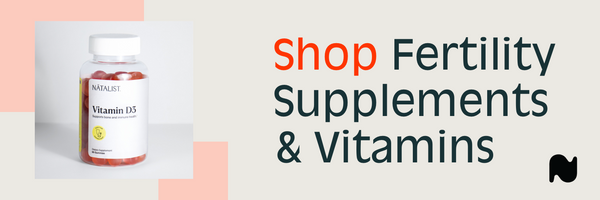What Does Endometriosis Feel Like? Insights & More

Endometriosis can share symptoms with other conditions, including ovarian cysts, pelvic inflammatory disease, fibroids, and more. Keep reading to learn what endometriosis feels like and how to manage your symptoms.
What is endometriosis?
Endometriosis is a chronic condition impacting about 10% of reproductive aged females in the world (approximately 190 million people). [1] It is characterized by uterine tissue growing outside of the uterus. People with endometriosis can have endometrial lining, also known as implants, found on the bladder, rectum, ovaries, fallopian tubes, and more. Unfortunately, we don’t yet have a specific cause, treatment, or prevention method for endometriosis. [1] There are multiple stages or degrees of endometriosis that vary based on the extent and severity of the condition. Some have very few implants and relatively no pain, while others have widespread implants, cystic ovaries, scar tissue, and debilitating pain or discomfort.
Understanding the pain associated with endometriosis
The presence of endometrial cells and tissue outside of the uterus can cause inflammation and pain. This pain may be present regularly, or could be cyclical and associated with menstruation. [1] Common symptoms of endometriosis include painful menstrual periods, painful sex, pain while using the bathroom, abdominal or back pain, heavy bleeding or bleeding between periods, and infertility. Endometriosis pain can vary from person to person and may feel like stinging, cramping, stabbing, or burning. [1]
What can be mistaken for endometriosis?
There are other conditions that impact the reproductive system that may have similar symptoms to endometriosis. Let’s break down the similarities and differences you should know about.
Pelvic inflammatory disease (PID)
PID is an infection of the reproductive organs, most commonly caused by the spread of bacteria from the vagina to the uterus, fallopian tubes, or ovaries. [2] This can occur as a result of untreated sexual infections or other untreated bacterial infections. While some people with PID don’t have any symptoms, others can experience pain in the abdomen and pelvis, abnormal bleeding, pain during sex, or painful urination. [2] Many of these symptoms are also seen in people with endometriosis, which is why PID could be mistaken for endometriosis, or vice versa.
Ovarian cysts
Ovarian cysts are fluid filled sacs found on or within one or both ovaries. [3] There are multiple types of ovarian cysts; in fact, most cysts are harmless and will go away on their own. When ovarian cysts are caused by a condition such as polycystic ovary syndrome (PCOS) or endometriosis, they may cause pain, swelling, pain during sex, or painful periods. (Learn about the difference between PCOS and endometriosis.) [3] While some ovarian cysts are caused by endometriosis (known as endometriomas), they can be entirely unrelated. A healthcare provider may be able to help distinguish between endometriomas and other types of cysts.
Irritable bowel syndrome (IBS)
One symptom of endometriosis is experiencing pain while defecating. This may be especially common in those with bowel endometriosis, which occurs in about one third of endometriosis patients. [4] Bowel endometriosis may cause symptoms such as diarrhea, constipation, bloating, rectal bleeding, etc. These symptoms are very common to IBS symptoms. We aren’t sure exactly what causes IBS, but it isn’t thought to be connected to endometriosis, even though some do experience worsening symptoms during the menstrual cycle. [5]
Uterine fibroids
Uterine fibroids are noncancerous growths that form in the muscle tissue of the uterus. There are different types of fibroids that vary in size, shape, and location. [6] Genetics may be a factor in fibroids, but the primary cause of fibroids is unknown. Fibroids can cause symptoms similar to endometriosis, such as abnormal bleeding, heavy or long periods, cramping, pain during sex, pain in the abdomen or lower back, difficult bowel movements, and more.
Importance of proper diagnosis
There are many conditions that can be difficult to diagnose and have symptoms similar to endometriosis. It’s important that you seek out a healthcare provider that can get a detailed medical and family history, perform a pelvic exam and/or imaging exams, and run other tests to get you a correct diagnosis. A diagnosis is very likely to impact treatment options, future medical decisions, family planning, and quality of life. [7] If you feel as though your provider hasn’t given you adequate care, you may want to seek out a second (or third) opinion.
The impact of endometriosis on daily life
It can be difficult to navigate daily activities with any type of condition or disease, and endometriosis is no different. If you are experiencing any difficulties in your daily life, you should speak to a healthcare provider. You may also want to consider finding a support group or online community. There are some very useful resources available including SpeakEndo.com and Endometriosis Association.
Physical effects on daily activities
While not everyone with endometriosis has painful or debilitating symptoms, many do. Endometriosis can decrease someone’s quality of life if they're experiencing severe pain, fatigue, depression, anxiety, or infertility. [1] In some cases, pain may be too extreme for someone to be able to go to work or school.
Relationships and social concerns
Similarly, pain during sex or severe pain in general can lead to difficulty in relationships. This is especially true if someone is unable to have enjoyable sex with their partner or misses out on social events regularly. [1]
Fertility and family planning
Endometriosis can make family planning more difficult. Infertility is a possible symptom of endometriosis due to the scarring, adhesions, and inflammatory nature of the condition. [8] It’s estimated that up to 50% of people with endometriosis experience infertility. [8] Fortunately, there are options available for those hoping to conceive with endometriosis. Read Getting Pregnant with Endometriosis →
Make sure to speak with a healthcare provider if endometriosis is interfering with your daily life or causing any strain on your daily life and happiness. We may not have a cure for endometriosis at this time, but there are many ways to treat and manage endometriosis symptoms.
Treatment options for endometriosis pain relief
There are no known cures for endometriosis, however, there are quite a few treatment options and self-care tips for managing endometriosis symptoms. If you are concerned about any symptoms or conditions, you should always speak directly to a healthcare provider first.
Over the counter pain medications
If someone is experiencing pain associated with endometriosis, over the counter pain medications such as nonsteroidal anti-inflammatory drugs (NSAIDs) may be helpful. [9] Common examples of NSAIDs include ibuprofen and aspirin. Other high strength pain medications may be available as prescription only.
Hormone therapy
A common treatment for endometriosis is the use of hormonal therapy. Hormonal contraceptives can be useful for regulating the menstrual cycle and may help prevent painful or heavy periods. [9] Other hormone therapy options include gonadotropin releasing hormone agonists, antagonists, and aromatase inhibitors. These are typically used as second line therapy if contraceptives or pain relievers are unable to help.
Surgical interventions
There are a few different types of surgical treatments that may be used to treat endometriosis. There is no guarantee that surgery will stop implants from coming back or completely absolve the pain and discomfort associated with endometriosis, although some patients do report pain relief after surgery. [9] Surgical treatment typically involves making small incisions into the abdomen in order to remove implants.
Fertility treatments
If someone does have endometriosis and is hoping to conceive soon, there are a few treatment options that may be able to help. Treatment options may vary depending on the degree of endometriosis, age, ovarian reserve, sperm analysis, etc. [10] Your healthcare provider should be able to guide you through all of your available options. Some fertility treatments that may be used include in vitro fertilization (IVF), intrauterine insemination (IUI), surgery, and ovulation induction. [10]
Alternative treatments and lifestyle changes
Alternative therapies include treatments like acupuncture, electrotherapy, dietary changes, and more. [9] These treatments are sometimes used as complementary treatments alongside hormonal therapy or pain relief medication. Research also shows that some vitamins and minerals may be useful for relieving cramps and balancing hormones. [11-14] This includes vitamin D, magnesium, calcium, zinc, and omega-3 fatty acids. Lastly, making some lifestyle changes may help to reduce pain and inflammation caused by endometriosis. Lifestyle changes include eating anti-inflammatory foods such as nuts, plant oils, fruits, vegetables, and fatty fish. [15] Avoiding alcohol and caffeine may also be beneficial. [16]
How Natalist can help
If you’re experiencing any painful or uncomfortable symptoms from endometriosis or other conditions, know that you aren’t alone. While there is no known cure for endometriosis, you may be able to find some symptom relief through various treatments and lifestyle changes. If you need a tasty way to curb your cramps with magnesium or products to support your fertility journey, Natalist can help. You should always speak to a healthcare provider directly about any symptoms, questions, or changes to your diet or supplement routine. If you want more information about endometriosis or other topics related to reproductive health and family planning, we’ve got you covered on the Natalist blog.
References:
- Endometriosis. World Health Organization. March 24 2023. URL. Accessed May 2023.
- Pelvic inflammatory disease (PID). Mayo Clinic. April 30 2022. URL. Accessed May 2023.
- Ovarian Cysts. Cleveland Clinic. July 20 2022. URL. Accessed May 2023.
- Wolthuis AM, Meuleman C, Tomassetti C, D'Hooghe T, de Buck van Overstraeten A, D'Hoore A. Bowel endometriosis: colorectal surgeon's perspective in a multidisciplinary surgical team. World J Gastroenterol. 2014;20(42):15616-15623. doi:10.3748/wjg.v20.i42.15616
- Pati GK, Kar C, Narayan J, et al. Irritable Bowel Syndrome and the Menstrual Cycle. Cureus. 2021;13(1):e12692. Published 2021 Jan 14. doi:10.7759/cureus.12692
- Uterine Fibroids. FAQ074. American College of Obstetricians and Gynecologists. July 2022. URL. Accessed May 2023.
- Dubois AT. Benefits of effective diagnosis on impact of quality of life. Clin Transl Allergy. 2011;1(Suppl 1):S75. Published 2011 Aug 12. doi:10.1186/2045-7022-1-S1-S75
- Endometriosis: Does It Cause Infertility? American Society for Reproductive Medicine. 2016. URL.
- Kalaitzopoulos DR, Samartzis N, Kolovos GN, et al. Treatment of endometriosis: a review with comparison of 8 guidelines. BMC Womens Health. 2021;21(1):397. Published 2021 Nov 29. doi:10.1186/s12905-021-01545-5
- Mavrelos D, Saridogan E. Treatment of endometriosis in women desiring fertility. J Obstet Gynaecol India. 2015;65(1):11-16. doi:10.1007/s13224-014-0652-y
- Yalçın Bahat P, Ayhan I, Üreyen Özdemir E, İnceboz Ü, Oral E. Dietary supplements for treatment of endometriosis: A review. Acta Biomed. 2022;93(1):e2022159. Published 2022 Mar 14. doi:10.23750/abm.v93i1.11237
- Abdi F, Amjadi MA, Zaheri F, Rahnemaei FA. Role of vitamin D and calcium in the relief of primary dysmenorrhea: a systematic review. Obstet Gynecol Sci. 2021;64(1):13-26. doi:10.5468/ogs.20205
- Parazzini F, Di Martino M, Pellegrino P. Magnesium in the gynecological practice: a literature review. Magnesium in the gynecological practice: a literature review. Magnes Res. 2017;30(1):1-7. doi:10.1684/mrh.2017.0419
- Nasiadek M, Stragierowicz J, Klimczak M, Kilanowicz A. The Role of Zinc in Selected Female Reproductive System Disorders. Nutrients. 2020;12(8):2464. Published 2020 Aug 16. doi:10.3390/nu12082464
- Foods that fight inflammation. Harvard Health Publishing. November 16 2021. URL. Accessed May 2023.
- Li Piani L, Chiaffarino F, Cipriani S, Viganò P, Somigliana E, Parazzini F. A systematic review and meta-analysis on alcohol consumption and risk of endometriosis: an update from 2012. Sci Rep. 2022;12(1):19122. Published 2022 Nov 9. doi:10.1038/s41598-022-21173-9
Reach Out, We're Here
Have questions about your order or products? For the speediest answer, check out our FAQ section. Need something else? Come find us below.
Please keep in mind our regular business hours; Monday-Friday, 9am-5pm CT.
Customer Support
support@natalist.com
Press Inquiries
media@everlyhealth.com
Business & Partnerships
team@natalist.com
Affiliates + Influencers
team@natalist.com
Job Openings
Careers Page
























